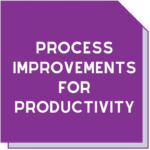The Lab Manager Conversations part one – Staffing
We’ve been speaking to lab managers and leaders about their roles and challenges. These conversations have been collated into a series of articles that will probably resonate not only with lab leaders, but those across other businesses as well.
While their pathways may have been somewhat different, all our respondents have clocked up well over 10 years of experience prior to their current roles. They also cover the spectrum of calibration, chemical, microbiology, electrical, inspection and environmental laboratories.
And although they were pleased to talk through their issues, by request we’ve changed their names to maintain confidentiality.
Getting staffing right from the beginning
One of the most time-consuming parts of a lab manager’s role appears to be managing staff. Since this is such a core part of the role, we’ll be examining individual elements separately.
No matter what kind of lab you lead, it doesn’t function without human interaction. And the first step to finding people is usually through an interview.
During the interview process, lab managers need to find people who are competent but who can also fit in with the dynamic of the lab.
Matthew sits in on interviews to assess the technical skills of the applicant, leaving the ‘soft’ skills part of the interview to the HR representative.
“I always ask about equipment they’ve used, deliberately using industry jargon that they’d only understand if they’d actually done that work,” he said. “If I mention a particular instrument that’s used in a test and they look completely blank, that’s a red flag for me”.
He’s also keen to explore their knowledge of equipment by using hypotheticals.
“Let’s say you have a piece of equipment that’s designed to measure temperature. Just because it says it can withstand the heat from a furnace, doesn’t mean you should drop it into one! Knowing what you shouldn’t do is just as important as knowing what you should”.
There’s also the issue of experience. Lisa explained that most of her hires aren’t new graduates. “It may sound unfair but people from other industries and other labs are my preference. Most of my recent hires have been over 40 and most of our staff are over 45. Graduates can take a LOT of time to train. Because we’re so busy, I don’t have the time to get them up to speed”.
Noticing a gap
Several managers mentioned another issue they had experienced with new graduates.
Lauren shared that, “Some of the younger people coming through aren’t following directions or think they know more because they’re recent graduates. And they also have fewer practical skills. Their knowledge is theory based and they struggle to apply this theory to actual situations. It can be really frustrating”. Matthew agrees – “some of them have no common sense!”
However, it’s not all doom and gloom for new graduates.
“The bonus of having younger people in the lab is their enthusiasm when they want to learn and grow and be part of the lab and the greater business,” says Sarah. “There’s a lot of positive energy that comes from that attitude which can be in contrast with the people who’ve been there a while. And for those just turning up and going through the motions. Because labs have people like that too”.
It’s not just about technical skills
 Lisa agreed that this new energy was a big plus and added that she was considering taking on a new graduate. However, this would only happen when she had a person or mentor available to train them. This should ensure they get consistency of message.
Lisa agreed that this new energy was a big plus and added that she was considering taking on a new graduate. However, this would only happen when she had a person or mentor available to train them. This should ensure they get consistency of message.
“It’s not really fair to turn them over to a series of people to train them. They’ll have to get used to different training styles and ways of sharing information as well as trying to learn. Having a dedicated resource to show them the basics is the best way to begin. It’s better for the staff member, the lab, and the business”.
Once those basics were mastered, the mentor can show them other ways of doing things or leave them to discover these on their own. “For example, you can cut and paste something in a word document using the mouse or you can use the control keys. Both work and get the same result but it’s personal preference which one you use”, she adds.
These Lab Managers all recognise that competence of people goes beyond just having technical skills. So, too, is understanding the limitations of your systems of training and assessing competence. It’s important to step back and take a “helicopter view” of systems of assessing competence and training staff periodically. This will help us determine if our systems are right for the organisation.
This idea of noticing gaps and looking at new ways of doing things to improve and address those gaps is actually fundamental to Quality. It’s something that is required in both the elements of Personnel and Management Review of any of the ISO standards.
Learning to learn
There was a lot of discussion about the role of education. As well as theory, there is an expectation that graduates will arrive with the ability to think critically about what they’re doing. However, it appears that not everyone arrives with these skills.
Chris doesn’t have a formal induction process in his lab. And while the interview process gives him the opportunity to gauge the candidate’s ability to think on their feet, he’s looking for something more.
“You should be able to walk into my lab, pick up a procedure, follow it and get a result – if you can’t that’s a different problem! But I want them to be able to think critically. Look at what you’ve been asked to do and review its intent and purpose. Critical thinking is incredibly important.”
And while he’s happy for staff to challenge processes or procedures, he doesn’t accept short cuts. “Every part of the standard is there for a reason. And our processes and procedures are carried out against the standard. So, if you’re not following those, you’ll need a very good reason!”.
Evaluating competence
 Chris’ approach of not having a formal induction process in his lab may be OK. Putting our “Quality” lens over this approach might suggest that it’s not really delivering an optimal outcome. Chris is finding that his expectation of competence as a critical thinker but at the same time following a procedure is not being realised in his new hires. How do we deal with that?
Chris’ approach of not having a formal induction process in his lab may be OK. Putting our “Quality” lens over this approach might suggest that it’s not really delivering an optimal outcome. Chris is finding that his expectation of competence as a critical thinker but at the same time following a procedure is not being realised in his new hires. How do we deal with that?
While something like ISO 17025 does not specifically require an induction process, it does call upon a lab to have criteria for competence and evaluate whether the individual meets those criteria. And as we identified above, it’s not just the “hard”, technical skills that we need to consider in the competence package. The soft skills of critical thinking and following procedures form part of that package. So, think about what criteria for competence you’ve set out for your staff. Ask whether they are as explicit as they should be.
Contractors only please
A common theme amongst the Lab Managers was their inability to find new staff. With a tightening labour market, there were fewer candidates available to fill roles.
For a small business, the time it takes to get people up to speed can be too much of a burden on already stretched resources. Covid has also increased the struggle when seeking new staff. In some industries, using contractors is a solution.
“Most people in this field have an ABN and seem to prefer to work as contractors. And that works out really well for me because as a relatively new small business owner, I don’t have the capacity to hire lots of staff,” explains Neil. “Plus, I wouldn’t have the time to train the people I need across the scope of tests my clients are requesting”.
While this may seem an ideal solution, it’s not always guaranteed to be a good one.
“I recruit through an agency. But sometimes the people they send don’t have the skills they said they have. And this is obvious when you ask them to carry out a test and they have no clue! So, then you have to go back to the agency and get them to find someone else which is a waste of everyone’s time”.
There’s also the balance of cost versus convenience. If the contractor is very expensive, labs may not be able to pass this onto clients and still remain competitive.
Making your needs known
Neil recommends that if you decide to go down the contracting path that you use a reputable agency with a good screening process. Plus, you should have a clear specification of what you need. “If you’re hiring for a particular job, have a really specific checklist for the agency. Tell them exactly what you’re looking for. It will save everyone time and anxiety in the long run”.
And so, we return to the idea of understanding what competence looks like and setting very clear and complete criteria for competence. It’s important to not only create that for your internal documents, but to also communicate those criteria to the recruitment agency.
Managing the flow
For small or newly established businesses, there may not be a consistent flow of work. If a new client suddenly comes on board, using contractors will get the business over the initial flurry of work and ensure on-time delivery of results.
And of course, since they’re contractors, the need to ‘manage’ them isn’t there. Neil explains, “they know they’re employed for specific tasks or tests and just get on and do the job. The good ones also understand that time is money because they’re also business owners. It makes them so much more efficient and makes me more likely to use them and recommend them again”.
But as we know, it’s not just about getting the job done; we also want the job done right, no matter who is performing it. So, make sure those competence requirements are also made known to your contract staff so that they understand exactly how their performance will be measured.
The final word goes to Chris: “Remember, the labour market is tightening. It makes sense to look at simplifying and optimising your processes and streamlining training. Once you get people on board, you need to get them up to speed as quickly as possible.”
Just how we do that doesn’t mean we throw out all aspects of our people management functions. Issues of competence still remain fundamental to providing a good service.
Do you agree with our respondents? Drop an email to info@masmanagementsystems.com.au and let us know!
Next week we’ll talk about leadership, managing people and promotion – how do you deal with peers when you’ve been promoted?
Download the article The Lab Manager Conversations series – part one
People who read this also enjoyed:





